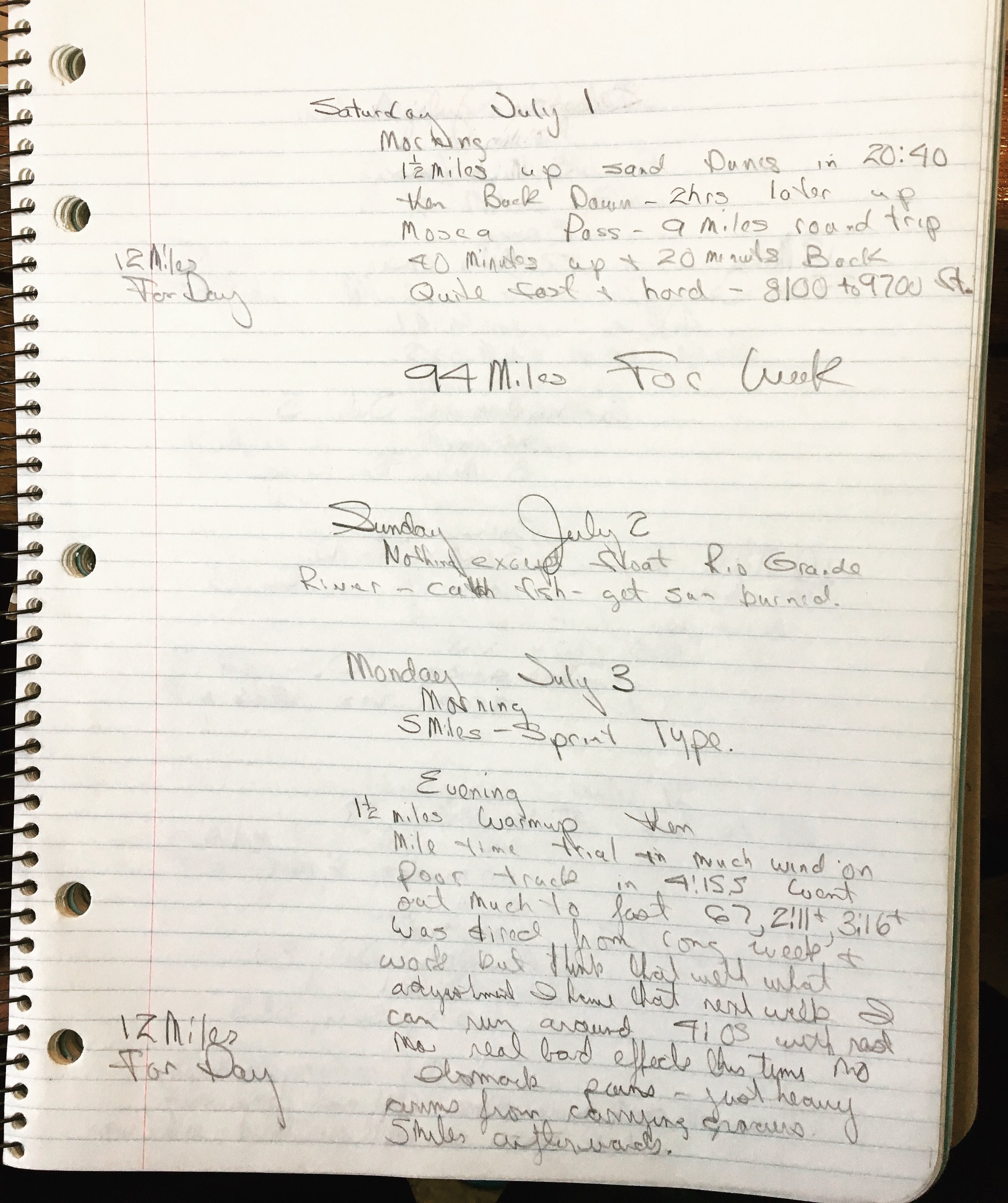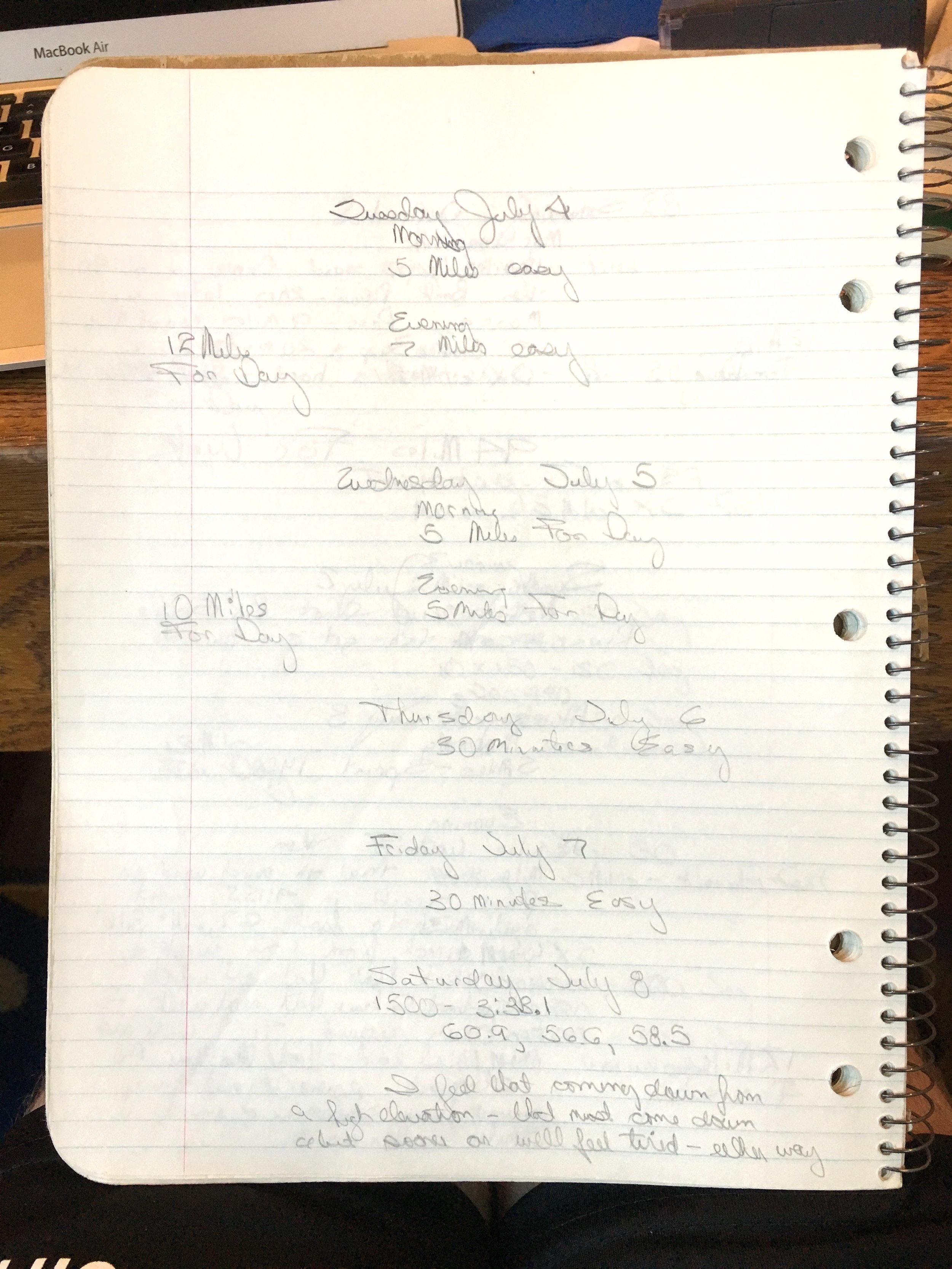The last of Jim Ryun's world records were perhaps his greatest. His 3:51.1 mile was called the finest of them all by Roger Bannister. Straight to the front, no pacesetters, just one man against the clock. That was June 23, 1967.
Two weeks later, Jim Ryun was at it again at the Commonwealth versus the United States in the Los Angeles Coliseum. In the interim, he had disappeared into the mountains of Colorado, based in Alamosa where he ran the sand dunes and runs at 8-9,000 feet of altitude. While America had some of the world's greatest milers at that time (in fact, 6 of the top 10 milers in the world that year came from the AAU final on June 23rd), Ryun knew he would be facing the great Kenyan, Kip Keino, in the Commonwealth meet.
In preparation for the race, less than one week out, Ryun attempted a one mile time trial. It did not go well. Shooting for a 4:05 in the rarified air of Alamosa, Ryun ran a 4:15 with splits of 67, 2:11 and 3:16. But he didn't panic. He took the rest of the week easy-his training log is filled with "5 miles easy" and "7 miles easy" and even, "30 minutes easy" leading up to the showdown with Keino.
And what a showdown it was. With a pedestrian opening 400m of 60.9, Ryun and Keino lurked at the back of the pack, content to let others do the work. Upon hearing the first 400m split, though, Keino decided he'd go from over 800m out and floored it.
The next 400m was covered in 56.6 seconds as Ryun tucked in behind Keino.
800m slipped by in 1:57.5. It wasn't World Record pace, but it was a race.
Desperate to escape Ryun's punishing kick, Keino kept the pressure on but could not shake Ryun. The third 400m was covered in 58.5 for a 1200m split of 2:56 flat. Virtually neck and neck with Ryun, Keino strained to summon additional speed while Ryun dropped his head and started his kick. A gap appeared as Ryun took the lead with 300m to go.
5 meters then 10 then 20-Ryun was moving away with ease. Keino was beaten, but Ryun was was not done. 20 meters became 30 and at the top of the homestretch, Ryun's lead grew to almost 40 meters as he crossed the line in 3:33.1.
His final 300m had taken only 37.1 seconds, equivalent to a 50 second last 400m. His last 1200m was clocked in 2:46, one of the fastest ever recorded. Gone was Herb Elliot's World Record of 3:35.6. In a sport where tenths of seconds often decide World Records, Ryun had taken 2.5 seconds off the previous World Record.
It is one of the records that physiologists and followers of the sport have bandied about for years with, "What if. . . ?"
What if Ryun had been running on a Mondo track and not dirt? Some felt he lost a second per lap just for the surface of the track. What if Ryun and Keino had squared off in one of the Scandinavian meets with temperatures in the 60s instead of 100 degrees?
Clearly this record was superior to his 3:51.1 and to this day, when asked, Ryun will say, "I wish I'd been able to run the last 100m+ to finish a mile. I think I might have just had enough to dip under 3:50."
If one was to convert Ryun's 1500m to a mile (17 seconds), it was a 3:50.1 mile. If one were then to take a second off per lap, one doesn't have to stretch the argument too far to realize that Jim Ryun had the ability to run 3:46-47 for the mile.
In 1967. To watch clips of the race, click here.
This is why many call him not only America's greatest miler, but one of the greatest of all time.
EPILOGUE:
Just weeks later, Ryun and Keino would square off again in White City (London) in the Emsley Carr Mile (race here). Keino switched tactics and decided he would sit on Ryun. After splits of 62 and 2:03, Ryun took the lead from 880 yards out and pushed the pace. 3/4 of mile was covered in 3:02. Keino lurked, easing up on Ryun's shoulder, hoping to turn the tables on him. But as Keino tried to pass with 220 to go, Ryun pushed the accelerator down once. Then twice. In a matter of 50 yards he was 10 yards clear of Keino, a margin that increased down the homestretch as Ryun crossed the line in 3:56, covering his last 440 in 53 seconds. For a highlight reel of the meet, click here.

